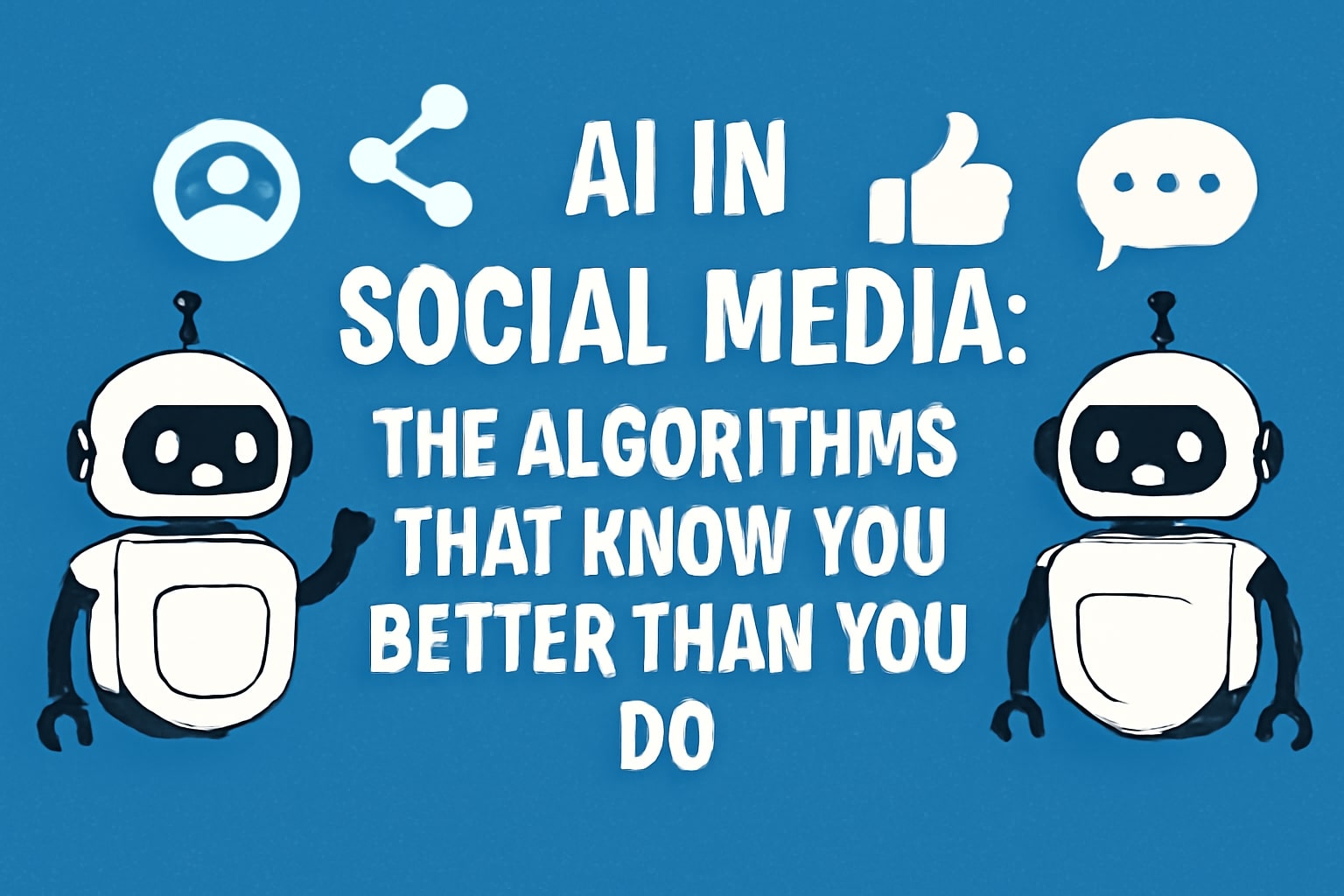Every time you open Instagram, TikTok, or Facebook, Artificial Intelligence in social media is at work. AI algorithms learn your preferences, predict your behavior, and deliver content that keeps you scrolling. Here’s how AI shapes your online experience.
1. AI in Social Media Content Recommendation
The most visible use of AI in social media is content recommendation. Platforms like TikTok and Instagram analyze user behavior to provide highly personalized feeds. For example, AI considers:
- What you watch: Duration spent on videos or posts.
- Engagement: Likes, comments, shares, and saves.
- Your network: Who you follow and interact with.
- Your creations: Captions, hashtags, and posts you publish.
These insights allow AI to serve content tailored to your interests. Research shows that personalized feeds increase user engagement dramatically.

2. AI-Powered Advertising on Social Media
AI in social media also drives hyper-targeted advertising. Platforms analyze demographics, interests, and even off-platform activity to display ads tailored to each user. This ensures that the content you see is relevant and timely.
For example, after searching for hiking gear online, you might see ads for boots or backpacks on Instagram. This type of AI-driven advertising improves marketing efficiency for businesses and engagement for users.
3. AI in Social Media Safety and Moderation
With billions of posts uploaded daily, humans alone cannot moderate content. AI detects and flags harmful content such as:
- Hate speech, harassment, and bullying
- Graphic violence and disturbing material
- Spam, fake accounts, and scams
- Copyright infringement and plagiarized content
This AI-driven moderation maintains safer social platforms while freeing human moderators to handle complex cases.
4. Image and Video Recognition Powered by AI
AI can “see” and understand photos and videos. Key features include:
- Automatic Alt-Text: Generates descriptions for visually impaired users.
- Photo Tagging: Suggests friends to tag using facial recognition.
- Content Discovery: Search for posts based on images, such as #beach photos with sand and ocean.

5. Augmented Reality Filters and Effects
AI also powers AR filters on Instagram, Snapchat, and TikTok. Computer vision tracks facial features in real time, overlaying digital effects like dog ears or makeup enhancements. This boosts user engagement and creativity.
6. The Double-Edged Sword of AI in Social Media
Despite its benefits, AI in social media comes with challenges:
- Filter Bubbles: Users may only see content that reinforces existing beliefs.
- Addictive Design: Engagement-driven AI can lead to endless scrolling and reduced attention spans.
- Data Privacy: AI personalization requires massive data collection, raising privacy concerns.
7. How to Take Control of AI on Social Media
You can guide AI to work for you rather than against you. Steps include:
- Engage actively with content you want to see more of.
- Use “Not Interested” or “Don’t Recommend Channel” options frequently.
- Curate your following list carefully.
- Regularly review privacy and ad preference settings.
By understanding Artificial Intelligence in social media, you can use these platforms more consciously and intentionally.

Learn more about AI applications in digital marketing on our AI in Digital Marketing page, and explore content creation tools with AI on our AI for Content Creation guide.
